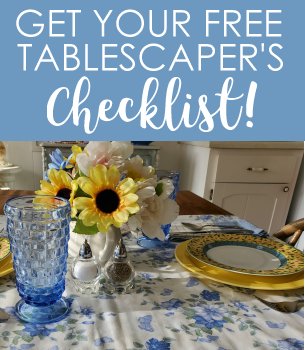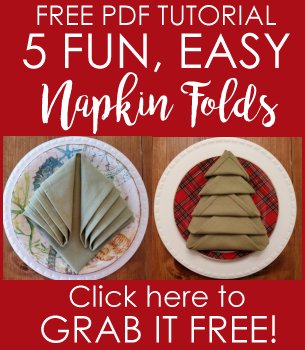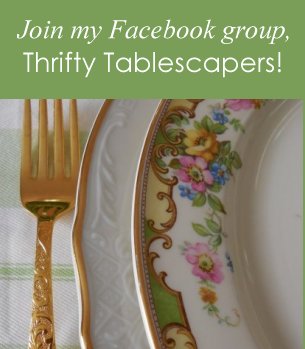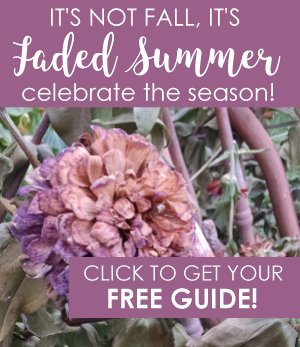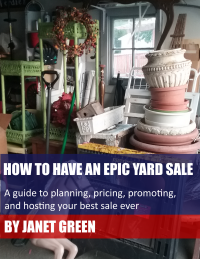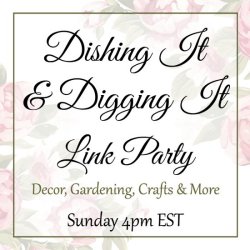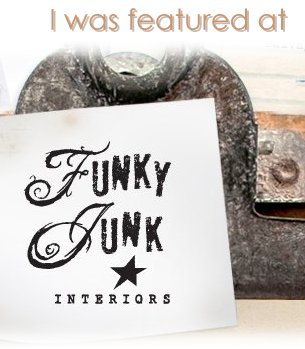I’ve always enjoyed seeing birds around my yard, but over the past couple of years I’ve made an effort to learn a bit more about them and provide supplemental food and water that would appeal to them. I’ve come to realize that basic birdwatching (just being a novice!), and encouraging birds to visit my yard, flowers, feeders, and water sources, is one of the most satisfying aspects of gardening.
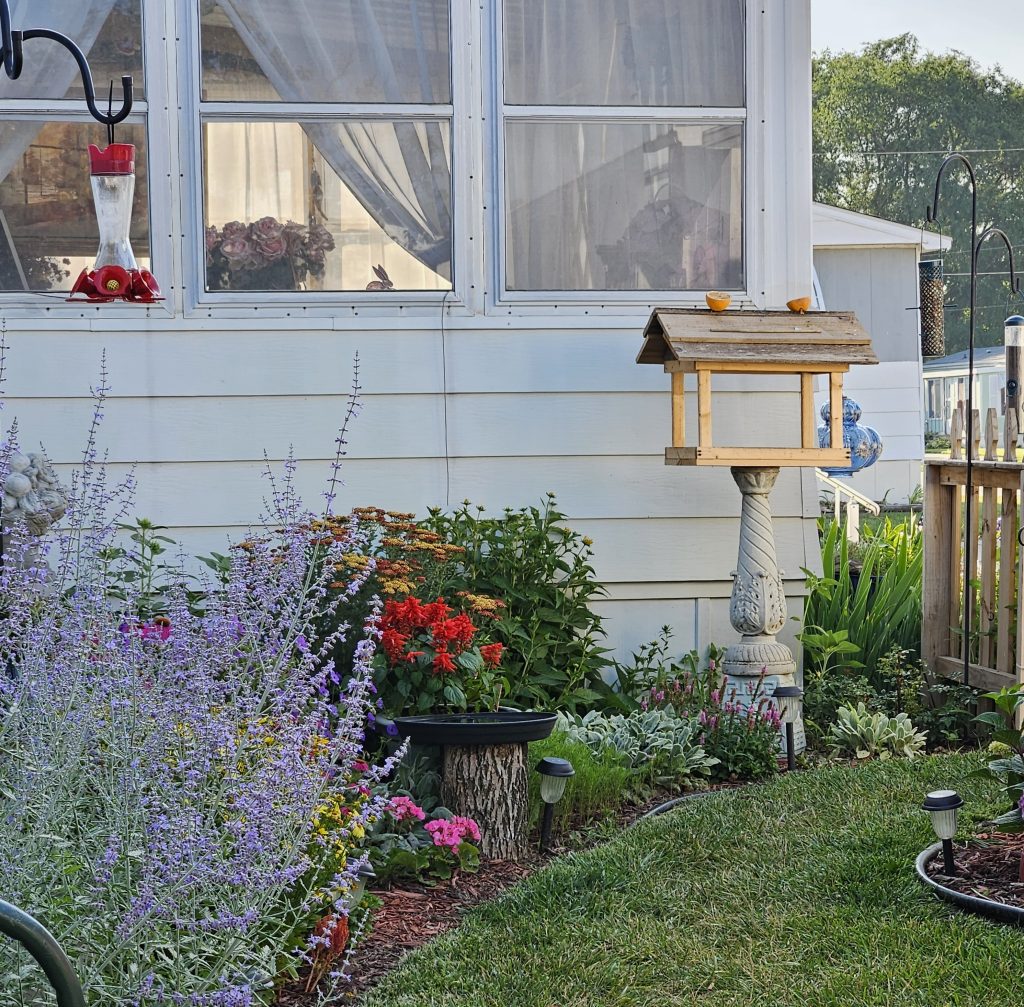
Providing resources for birds is very simple, and a perfect activity for Faded Summer. I can’t possibly provide a comprehensive “birding guide” in one blog post, but here are the most basic elements – and a few of my favorite resources linked at the end!
Why begin birdwatching (and feeding) now?
In the midwestern United States, as in many areas, there are certain birds that are here pretty much year-round: Northern Cardinals, Blue Jays, sparrows, and even American Robins, among others. But in Spring and then again beginning in August (Faded Summer!), a larger variety can be attracted and viewed due to Fall migration. At this time of year, the birds who migrate to their northern nesting grounds in Spring are headed back to their Southern homes – sometimes as far away as Mexico and South America!
So as migration season progresses, even if certain birds don’t live in this area during the actual summer months, they can still be spotted for a few weeks during the migration seasons. For that reason, it can be quite satisfying to put out certain types of food in Faded Summer! (For more about basic birdwatching, migration patterns, maps, and species, be sure to visit All About Birds – a free resource provided by the Cornell University Ornithology Lab. )
Water before food
Water is, unsurprisingly, even more important for birds than food. A great way to start your birdwatching journey is to simply set up an inexpensive bird bath, and keep it filled with fresh water. Even better, a fountain with running water! Birds are attracted to the sound and sparkle of trickling water, and a fountain will draw them quickly to your space for drinking and bathing.
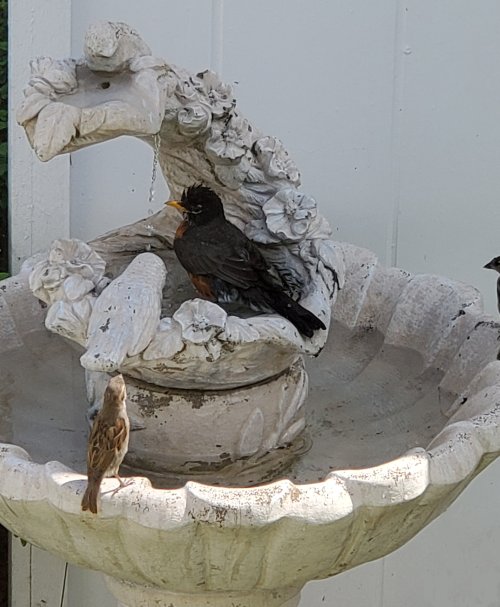
I also provide pollinator watering stations in my garden. These are simple dishes filled with rocks and water, which bees and butterflies use to hydrate and/or sun themselves.
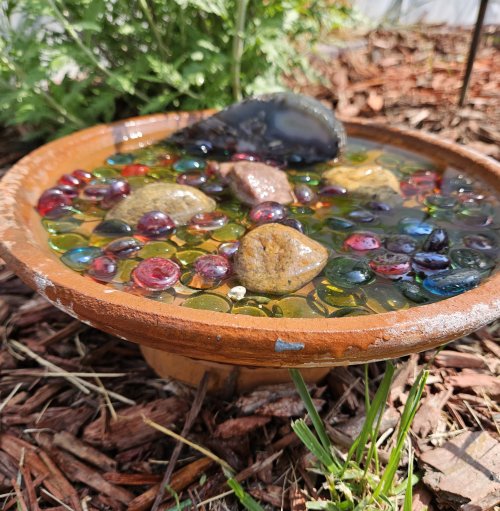
Placing feeders
We’ll talk about types of food in a moment, but first a couple thoughts on where to place a feeder or two. Birds love a bit of nearby cover, so if you can place your feeders near trees or shrubbery, that will give them the protection they need from predators.
Places to perch are also important. This requirement is easily met just by hanging feeders from shepherd’s hooks, and the feeders themselves will also often have built-in perches. Fences and arbors also help fill this need. Of course, you will also want your feeders and baths visible from your window or a garden seating area so you can watch the fun!
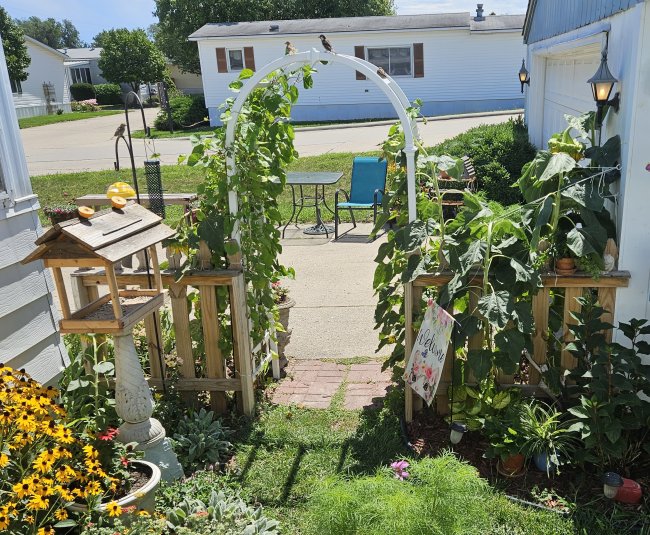
Types of feeders and food
There are many styles of feeders, and many are designed to attract specific birds with specific food. For example, cardinals and blue jays will pick sunflower seeds and whole peanuts off a simple tray feeder, while Baltimore Orioles love grape jelly in a dish as well as oranges sliced in half. Eastern Goldfinches love sunflowers (they’ll hang upside down off drooping sunflower heads to grab the seed right off the plants!) as well as hanging feeders full of Nyjer seed. Many birds also love safflower seed.
It’s easy to go overboard with feeders and food, and it can get messy. I’ve narrowed mine down to a homebuilt covered tray, hanging feeders with chopped peanuts, and a hanging Nyjer feeder. I’ve got examples of most of these linked in Resources at the end of this post.
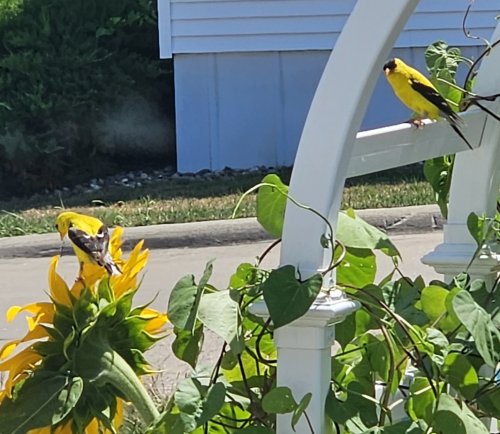
A great tip, even for basic birdwatching, is to avoid commercial “wild bird food” mixes if you can. Fillers in these mixes such as milo and millet make a huge mess and attract birds that are already over-populated, such as sparrows. After a great deal of reading and trial, I’ve fine-tuned my menu and now purchase black oil sunflower seeds, safflower seeds, chopped peanuts, nyjer, and whole peanuts in bulk. My feeders are placed near patches of seed-grown sunflowers and zinnias, which birds (and pollinators!) love.
In winter, I add suet cakes in small hanging “cages” which woodpeckers enjoy – but I avoid these in summer because the ingredients not only melt and make a mess but can also coat feathers and make flying difficult.
Hummingbirds
A favorite visitor in my garden is the ruby-throated hummingbird. In my previous home I had about a dozen of them. Currently I only have three. I’m told it’s likely the same three, returning year after year – which is pretty amazing when you consider how far they have to migrate! They are beautiful and SO entertaining to watch! I put up a couple of hanging feeders every year and fill them weekly with homemade nectar. (Honestly, the red-colored store-bought nectar is expensive and unnecessary!)
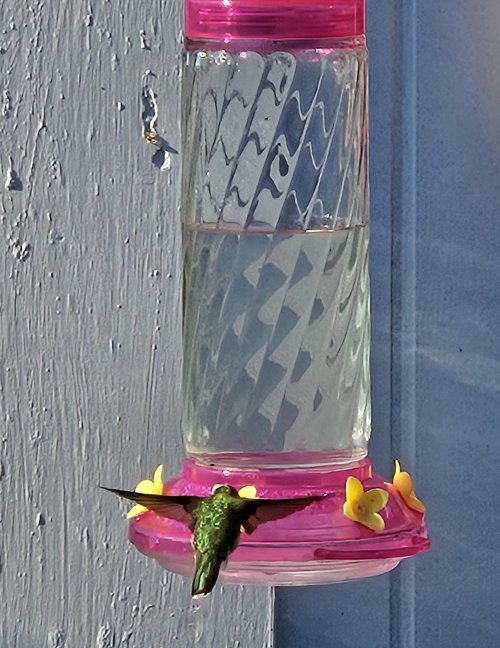
Making homemade nectar is so simple! The recipe is four parts water and one part granulated sugar. So, for example, 2 cups of water and 1/2-cup of sugar. Boil the water, then remove from heat and add the sugar. Stir until it’s dissolved, then let it cool completely before adding to the hummingbird feeder.
It’s important to rinse out the feeders and clean them when replenishing the nectar because mold can quickly start and grow. Hummingbirds will avoid the feeder if it’s dirty!
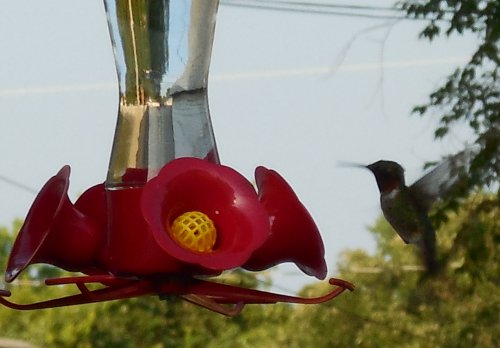
Crows
Ok not gonna lie, I ADORE crows! They are smart, social, and so interesting! And many people have had the amazing opportunity to actually befriend neighborhood crows by providing supplemental food and exchanging “gifts.” I would love for this to happen to me, but so far it hasn’t.
The best (and only) helpful hint I can give you on this topic is to search for videos about “befriending crows” on Youtube or even TikTok. It appears the trick is to be consistent, providing treats (whole peanuts or cat food kibble) at the same time everyday – which explains why I’ve had no luck with this. I need to make a more concerted effort – maybe this will be my year!
Resources
Here are a few of my favorite birding resources and products. Please note that all links are Amazon affiliate links – this means if you click through and make a purchase, it costs you nothing but I do earn a small commission which helps support the blog. So, understanding that all of these items (or similar) are probably available to you locally, thank you for any purchases you might make! Also note that my platform feeder is homebuilt and my fountain was a curb find (see photos earlier in this post) so I don’t have links for those.
“Birds in Your Backyard” – a great “beginning birder” book!
National Geographic Bird Identification Guide
A lightweight, inexpensive bird bath – I had this one at a previous home. It’s lovely, but depending on placement it might require being weighted or staked so it remains upright in a storm.
A heavier ceramic bird bath – just one example among hundreds.
Hummingbird feeder – Again, dozens of styles of these, but I use this general design a lot. Skip the red nectar!
An oriole feeder to hold jelly and orange halves – I’m trying this one for the first time this year!
Metal mesh feeders for chopped peanuts. The starlings had taken over my tube-shaped mesh peanut feeder, so to discourage them I switched to these ball-shaped ones. Too hard for bigger “bully birds” (sorry starlings, you know it’s true!) to cling to, and even the smaller birds have to work harder to get the peanut pieces out of the smaller holes so the peanuts last longer.
Cage-style suet feeders for cool- and cold-weather months. Woodpeckers love suet cakes, and these feeders are inexpensive and easy to refill.
I’m trying this “tail prop” design suet feeder for the first time soon!
Kaytee sock-style feeder for Nyjer seed – attracts goldfinches.
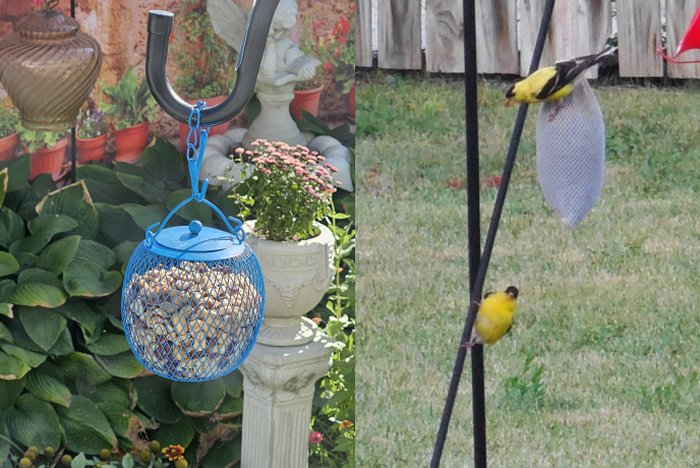
Final thoughts
If you would like to enjoy Faded Summer by making a few feathered friends, consider putting up a platform feeder and a metal mesh peanut feeder. You can start out with just black oil sunflower seeds and whole peanuts on the platform, plus chopped peanuts in the mesh feeder. Add a suet feeder when the weather gets cool, and definitely let me know if you make friends with any crows!

